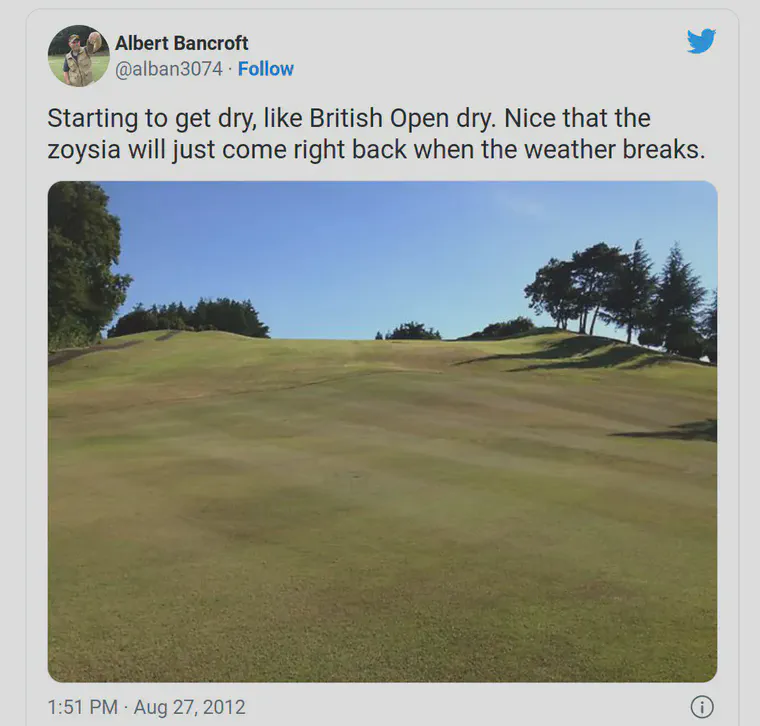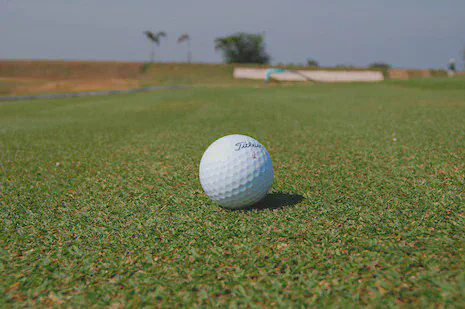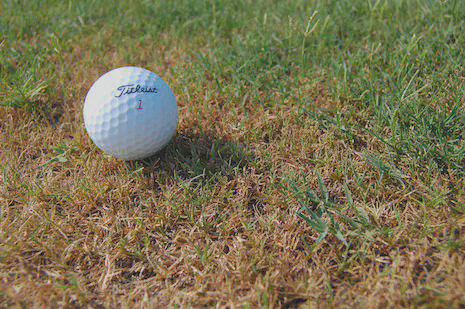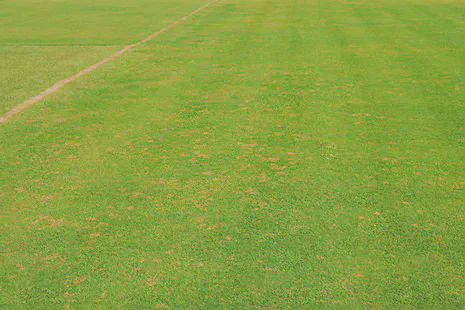Correcting a common misapprehension about seashore paspalum
After a month of research and writing in southern Japan—my 2012 summer sabbatical—I returned to Thailand, got my mail, and in that accumulated stack of papers I found (and promptly read) the July 2012 issue of Golf Course Architecture.

In a report on Morocco’s Mazagan Golf Resort, Adam Lawrence wrote that the course is a genuine links in soil, topography, and design, but noted that the course does not, with its seashore paspalum turf, provide the kind of surface that a course like that requires.
Lawrence then went on to write that:
Paspalum is capable of delivering a fast and bouncy surface, but it needs to be kept dry and lean, or it becomes ‘sticky’, with chip shots catching in the fringes, and an aerial approach the only sensible option.
This is not the first time I have heard that seashore paspalum should be kept dry and lean, but I would be remiss if I did not point out that such a maintenance strategy does not work with seashore paspalum.
Lawrence is correct that seashore paspalum is capable of delivering a fast and bouncy surface. But that surface is realized only when seashore paspalum is mown short, like a putting green, and when sand topdressing is regularly applied, like the maintenance for a putting green. Dry and lean means that growth is restricted by a lack of water and by a lack of essential nutrients. Dry and lean works to produce a firmer surface with bermudagrass, or with zoysiagrass (see below), but for seashore paspalum dry and lean leads to failure, and the effective approach, albeit a costly one, is to maintain the surfaces more like a green, namely with low mowing heights, frequent mowing, and regular sand topdressing.

Here we can have a look at seashore paspalum that is fast and bouncy, topdressed as if it were a putting green, mown at less than 6 mm, and definitely a surface on which the ball skips forward.

Keeping paspalum dry, as Lawrence has suggested, will make the paspalum firm—once. But as a regular maintenance strategy, it leads to seashore paspalum being overtaken by bermudagrass or other grasses and weeds. Here we see seashore paspalum maintained dry, and it is undoubtedly firm and bouncy, but it is also dying and the green bermudagrass grows right over the dormant seashore paspalum.

This problem is seen, as far as I know, on every golf course planted to seashore paspalum. In an interesting experiment at the University of Georgia, seashore paspalum plugs, and bermudagrass plugs, were planted into soils with pH of 4.2 and of 6.5 on 30 June 1998. For the first 24 days after planting, good soil moisture was maintained. After that, no irrigation was applied. Fertilizer was applied just twice, for a total N application of just 10 g N/m2 for the 53 weeks the experiment was underway.
And what were the results of this experiment in keeping the grass dry and lean? At pH of 6.5, the common bermudagrass covered 4x as much area, and the Tifway 419 covered 3x as much area, as did the the best of the paspalums, on average. At pH of 4.2, the difference was even more pronounced, with the common bermuda covering more than 13x the area of the top-performing paspalums, and the Tifway 419 covered 6x as much area as did the paspalums.
The results of this experiment are pretty easy to interpret. If you don’t apply supplemental irrigation to seashore paspalum, it doesn’t grow very much at all.
And of course keeping it lean doesn’t help, as we see below, for dollar spot will attack seashore paspalum with a vengeance when it is not kept growing at a relatively rapid rate.

Making seashore paspalum surfaces fast and bouncy requires maintaining them like a putting green, and not, as Adam Lawrence suggested, keeping them dry and lean. The truth is, seashore paspalum is overused, at least on golf courses in Asia, and other grass species can usually be maintained faster and bouncier for a much lower maintenance expense.